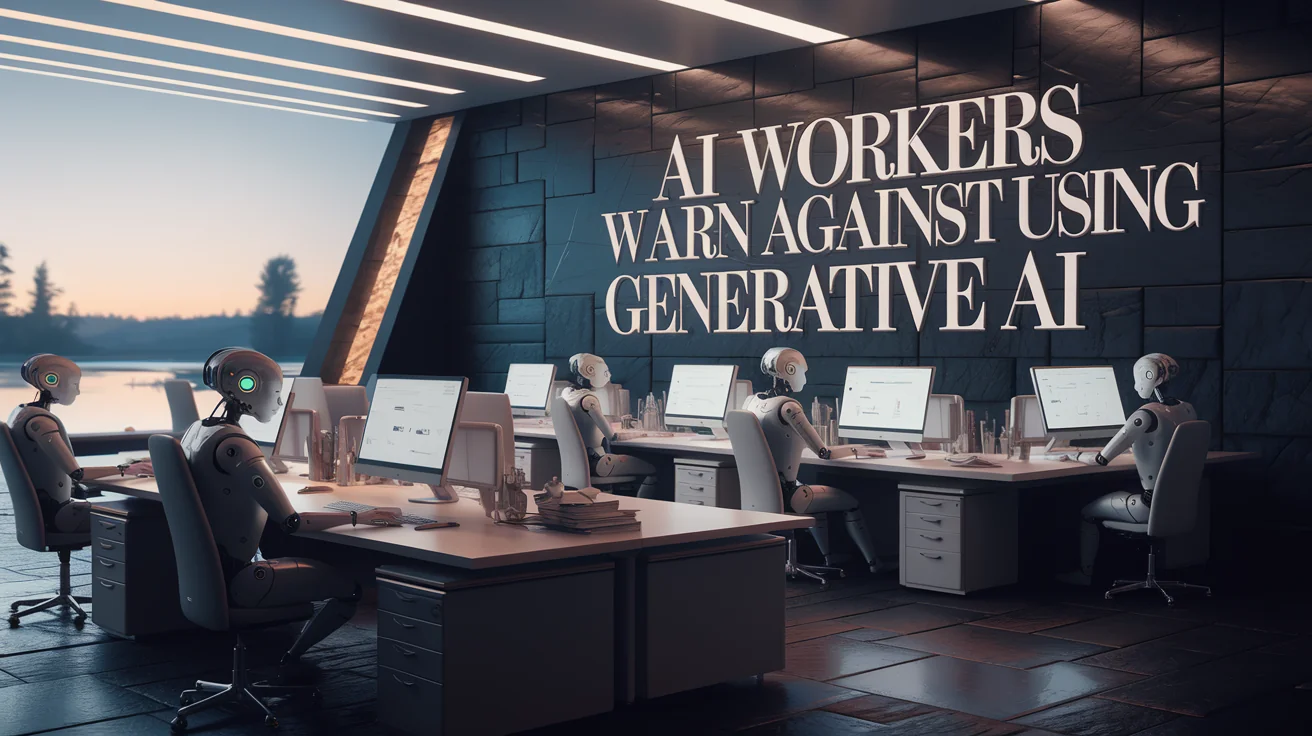AI Workers Warn Against Using Generative AI

Krista Pawloski, an AI worker on Amazon Mechanical Turk, reflects on a significant moment that reshaped her perspective on artificial intelligence (AI) ethics. During her work moderating AI-generated content, she encountered a tweet containing the racial slur “mooncricket” and realized the gravity of potential oversights in her duties. This led to a transformative revelation about the responsibilities she carries: ensuring the accuracy and appropriateness of AI content.
Pawloski has made a firm decision—both in her household and among her friends—to avoid using generative AI tools. “It’s an absolute no in my house,” she asserts, particularly forbidding her teenage daughter from utilizing applications like ChatGPT. This stance is motivated by her experiences and the frequent realization that unchecked AI could perpetuate harmful information. She encourages peers to critically engage with AI by testing its outputs against their own expertise, illustrating the inherent fallibility in these technologies.
The context of her work reveals a broader trend among other AI raters, who voice similar concerns over the reliability of AI models. These workers, tasked with validating responses from various AI systems, including those from tech giants like Google, have begun advising their loved ones to approach generative AI with caution or to avoid it altogether. One anonymous Google rater highlighted her reservations, particularly in the field of health where AI-generated information was often evaluated without sufficient medical background. This has raised alarms about the potential ramifications for users relying on AI for crucial matters.
The implications of AI training raise serious ethical questions, as many raters find themselves navigating a challenging landscape of insufficient training and pressure to produce quick results. Brook Hansen, another Amazon Mechanical Turk worker, articulates her unease regarding the lack of resources provided to those whose judgments significantly impact AI outputs. She emphasizes that these shortfalls contribute to the models’ unsafe and inaccurate conclusions.
Experts weigh in, suggesting that when those who work on AI systems exhibit distrust in their creations, it reflects systemic issues within the industry. Alex Mahadevan of Poynter points out that the rapid pace of AI development often comes at the expense of safety and thorough validation, leading to persistent problems within the user experience.
The quality of AI outputs has seen troubling trends. An audit by NewsGuard indicated a decrease in the refusal rates of generative models, while simultaneously, the likelihood of bot outputs containing incorrect information nearly doubled within a year. This raises further doubts about the integrity of data and the need for users to scrutinize AI information critically.
Furthermore, concerns over bias and misinformation are echoed among workers. One rater shared his experiences when questioning AI on sensitive historical topics, noting the stark contrasts in the quality of responses depending on the subject matter. His insights underscore the challenge of training AI on flawed or skewed data, leading to the principle of “garbage in, garbage out,” which warns of the consequences of poor data quality on output reliability.
AI professionals like Hansen highlight the importance of transparency regarding the human labor that fuels these systems, reminding audiences that AI is not as flawless or revolutionary as often portrayed. An understanding of the environmental and ethical implications—alongside the labor conditions behind AI—could help foster more responsible discussions about the industry.
The conversation around AI ethics mirrors movements in other industries, as Pawloski draws parallels with consumer awareness in textiles. She encourages the public to ask critical questions: Where does the data come from? Are workers fairly compensated? Such inquiries could drive meaningful change in how AI is developed and deployed, shifting the dialogue away from blind trust to informed skepticism.